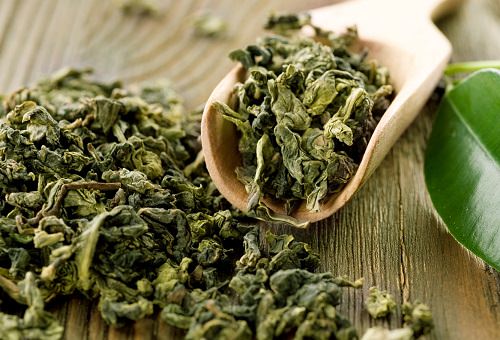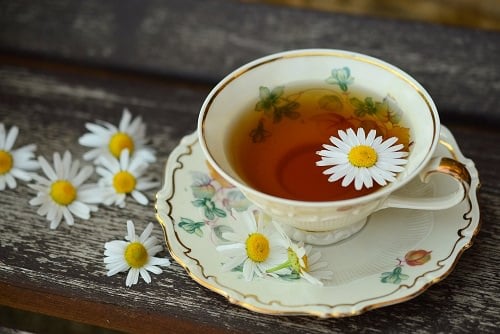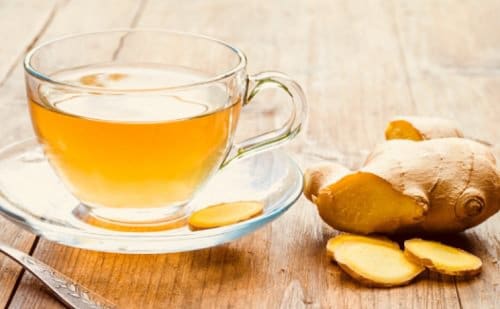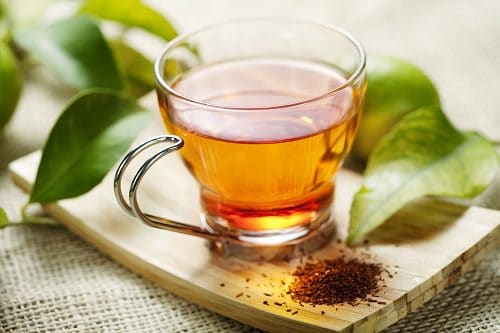To enjoy the best of their flavor, you need to know about the right Types of Tea Leaves. This article will surely help you make a great cup of tea!
So, when you were enjoying that hot cup of tea in the morning, did you think what might be its type? Well, there are more varieties of tea than you can think of! Nothing relaxes one out like a hot cup of tea. But as there are are many types of tea leaves, how to pick the best one out? This article will help you to choose the best from different Types of Tea Leaves!
Check out our article on growing tea leaves at home here
Types of Tea Leaves
1. Black tea

Black tea is popular in India, China, Japan, Sri Lanka, and Nepal. India ranks as the second-largest tea producer in the world. Black tea is one of the most common types of tea leaves and comes from the Camellia sinensis plant, just like other ‘true teas.’ It has a strong flavor, dark appearance, and higher caffeine content. The season and place also affect the taste of tea, where the plant grows. It comes in many varieties.
- Assam Black tea has a malt-like flavor.
- Darjeeling has a more delicate form and has floral or fruity elements.
- Ceylon black tea offers bold flavor with hints of spices or chocolate.
- Earl Grey is made up of black tea flavored with citrus or bergamot.
- English Breakfast has a similar flavor like Assam or Ceylon black tea.
- Flavored blends have a fruity or floral flavor like lychee or rose.
- Irish Breakfast has a red color and malty flavor.
- Keemum black tea is fruity and has a wine-like flavor.
- Kenyan black tea is dark with a mild, astringent profile.
- Masala Chai tea has a blend of many spices like cardamom, cloves, bay leaves, and black pepper.
- Yunnan black tea has a malty, chocolaty, and spicy flavor.
- Lapsang Souchong has a smoky flavor.
2. Green tea

Green tea is made from fresh or withered leaves of Camellia Sinensis plant. After picking, the leaves go through the process of rapid heating to stop oxidation. This keeps the leaves green and helps in keeping the taste fresh, light, and slightly grassy.
Different types of green teas have distinct tastes, that range from fruity to nutty to almost like seaweed. The flavor depends on the place where tea grows and also on the processing method. The most common types of green teas are:
- Biluochun is a Chinese-style green tea with a strong aroma and fruity taste.
- Genmaicha is one of Japanese tea. The blend of Sorghum or rice with green tea leaves gives it a ‘toasty’ flavor.
- Gyokuro is another Japanese tea variety with a strong, savory flavor similar to seaweed or soup stock.
- Laoshan has a smooth, creamy texture with a sweet and buttery flavor.
- Longjing or Dragon Well is Chinese tea. It has afresh, slightly sweet, nutty flavor.
- Matcha tea is one of the most famous Japanese tea and offers creamy, savory, bittersweet flavor.
- Sencha is another popular Japanese tea variety that has a savory, grassy, and mildly bitter taste with an aroma of melon or pine.
3. Oolong tea

Also popular as Wulong or ‘black dragon’ tea, oolong tea is semi-oxidize to 10-90%. It can be green or brown with different flavors. The varieties of oolong tea include:
- Bai Hao (White Tip) has a fruity flavor with a crispy finish.
- Baozhong or Pouchong goes through minimal processing and offers a delicate, subtle flavor.
- Da Hong Pao or Red Robe is highly oxidize that gives it a rich, earthy flavor.
- Feng Huang Dan Cong offers sweet and more floral flavor.
- Tie Guan Yin or Iron Goddess has fruity, sweet flavor notes.
- Tung Ting (Frozen Peak) gives a nutty flavor with a smooth finish.
4. Pu-erh Tea

Pu’erh is another Chinese tea variety. It mainly grows in the Yunnan Province of China and more expensive than other true teas. The tea comes from the leaves and stems of the Camellia Sinensis plant. This variety popularly sells in the form of cake, brick, or dry leaves.
After harvesting, the leaves are hand-tossed in large woks to prevent oxidation. Subsequently, in the next step, the leaves went through aging in a humid environment. This process brings out the unique rich and mild flavor.
- Young raw Pu-erh is aged for less than 2 or 3 years. It has the same grassy and fresh flavor and characteristics of green tea. The sweetness and bitterness depend on where it cultivates.
- Aged Raw Pu-erh has a darker color with an earthy, woodsy, and fruity flavor.
- Ripe Pu-erh is produced by composting dry Pu-erh leaves for several months, speeding up the fermentation process. The tea has a creamy and earthy flavor.
5. White tea

New buds and young leaves of the Camellia Sinensis plant makes the white tea. It has the most delicate flavor of all ‘true teas.’ New buds have silver hair that accounts for tea’s white tinge. After harvesting, the leaves and buds are steamed or fried to prevent the oxidation process. The leaves then go through the drying process.
This method of processing results in a light, delicate, and fruity flavor. It also has a lower caffeine content than other ‘true teas.’ The different varieties are:
- Bai Hao Yin Zhen or Silver Needle has a sweet flavor and floral scent.
- Bai Mu Dan or White Peony has a mildly stronger flavor than Silver Needle because of young leaves and buds.
- Darjeeling White Tea is from India and has a low cost compared to white tea grown in Yunnan.
- Gong Mei, aka Tribute Eyebrow offers rich, earthy flavor than other white teas.
- Shou Mai, aka Long Life Eyebrow goes through a long oxidation process that gives it a unique flavor.
Herbal Teas

Also popular as ’tisanes,’ technically herbal teas do not categorize as ‘true teas.’ But you can prepare them in the same way as the teas mentioned above.
1. Chamomile Tea

This herbal tea is made up of dry chamomile flowers. The two primary varieties are German Chamomile and Roman Chamomile (which is also known as English Chamomile). The fragrant tea has therapeutic properties. It aids in good digestion and cures sleeping disorders.
2. Ginger Tea

Ginger tea also has therapeutic properties. The tea is made up of brewing grated ginger in hot water. It also works on curing motion sickness and nausea.
3. Hibiscus Tea

Brewing hibiscus flowers in hot water results in red tea with a sweet and tart flavor. The hibiscus tea is popular as a refreshing summer beverage and relished as an iced tea. Full of antioxidants, it supports liver health and manages cholesterol levels.
4. Mint Tea

Mint tea is the most popular herbal tea. Fresh or dried leaves are used to prepare hot or iced mint tea. It has a myriad of health benefits and helps in improving digestion, cure sleep disorders, and has a natural energizing effect.
10. Rooibos

Also known as red bush tea or red tea, it is obtained from the fermented leaves of the Aspalathus linearis shrub that grows in South Africa. This tea has a sweet, earthy, and mildly floral flavor. High in antioxidants, it promotes a healthy heart.


